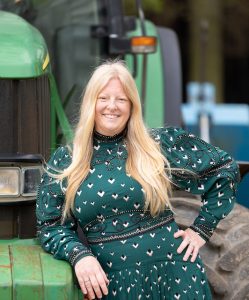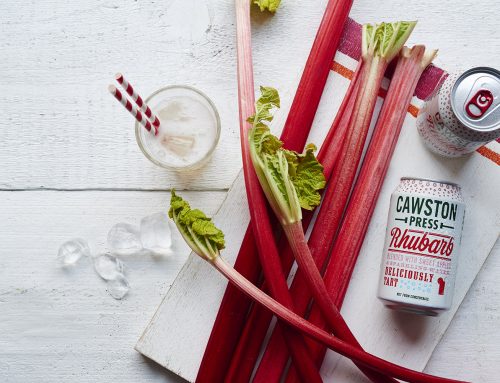I was lucky enough to meet Jenny Jefferies, the author of this fabulous book recently, as we were judging The Great Taste Awards together.
Just published by Meze Publishing, Islands in a Common Sea raises awareness of the ingenuity, dedication, and sheer effort that goes into the production of food worldwide.
Despite its global scale, the book’s based on Jenny’s belief that there’s more in the world to unite us than divide us, and the power of this unity in overcoming the challenges that currently face us all.
Stunning photography of land and seascapes alongside captivating portraiture makes this large hardback (£35) a lovely coffee table book, while the firsthand stories of men and women across the globe provide depth and insight not often available to a UK audience.
Each chapter has been written from the heart about the contributor’s farming or fishing livelihood, what they produce, their challenges and solutions, passions and dreams, along with recipes showcasing the food they grow or catch as well as the cuisine of their country.
From rural Bhutan to central Singapore, the wilds of Western Australia to paddy fields in Japan, and Argentine vineyards to Nigerian aquaculture, Islands in a Common Sea takes a deep dive into the everyday lives of 25 pioneering individuals who nurture their environment in the hopes of a regenerative, productive, and positive future.
Raising Money for a Great Cause
Jenny Jefferies describes her new book as “a beautiful keepsake dedicated to the next generation of farmers and fishermen” and has collaborated with the United Nations World Food Programme to help make a difference in the shorter term too: £2 from every copy sold is to be donated to their award-winning ShareTheMeal campaign.
These donations not only provide life-saving food in emergencies, but also facilitate school feeding, nutrition support, cash transfers and resilience programmes all over the world helping eradicate world hunger.
About Jenny Jefferies
Jenny is an award-winning author, food writer, farmer’s wife, and mother of two girls based in South Cambridgeshire.
It really is a stunning book – here are a few recipes to persuade you to buy a copy. (available from bookshops and Amazon too)
OXTAIL RAGU
PREPARATION TIME: 1 HOUR | COOKING TIME: 7 HOURS | SERVES 7-8
“When we sold our beef at farmers’ markets there were always cuts that didn’t sell well, oxtail being one of these.
It is delicious, very good value, and especially good for you if you source 100% pasture-fed meat. This excellent recipe was created by my stepson, Rollo, and we hope you enjoy it.”
400g carrot
200g onion
200g leek
100g celery
1 bulb of garlic
200g tomatoes
200g mushrooms
8 pearl onions
Rapeseed oil
3kg oxtail
½ bottle of white wine
2 bay leaves
Finely chop the carrot, onion, leek, celery, and garlic. Halve the tomatoes and roughly chop the mushrooms. Peel the pearl onions and set them aside.
Heat a pan to the hottest it will go, then add some rapeseed oil and sear the oxtail until golden all over. Don’t crowd the pan: you probably want to do this in batches, deglazing between each batch by pouring in a little water and scraping up anything stuck to the bottom of the pan (reserve this liquid).
Once all the oxtail is seared, set it aside and deglaze the pan again, then pour the deglazing liquid over the meat. Using the same pan, sweat the onion and garlic over a low heat in oil. Add the leek, celery and half the carrot, then cook until the vegetables just start to colour (15-20 minutes).
In a separate pan, cook down the mushrooms in a little butter and then add these to the vegetables. Turn up the heat, add the wine and cook until most of it has evaporated.
Add the oxtail back to the pan along with the tomatoes and top up with water until there is enough space for the meat to move around. Add the bay leaves.
Cook on a low heat with just a few bubbles for 7 hours or in a pressure cooker for 2 hours. Strain and keep the liquid, remove the oxtail and pick the meat off. Discard the rest of the vegetables.
Sweat the pearl onions with the remaining carrot, add the meat and strained cooking liquid, then reduce it down to a ragu consistency. Serve with stiff mashed potato.
SMOKY SOY & CITRUS GRILLED SALMON
PREPARATION TIME: 35-40 MINUTES | COOKING TIME: 30 MINUTES | SERVES 4-6
Cooking outside with friends is one of the many joys of the fair-weather season. Salmon grilled on a cedar plank is the quintessential taste of an Alaskan summer. Allow ample cooking time, savour the aromas, and celebrate the taste of fresh wild salmon.
FOR THE GLAZE
¼ cup freshly squeezed orange juice
¼ cup freshly squeezed lemon juice
¼ cup rice wine vinegar
4 tbsp maple syrup
2 tbsp soy sauce
1 tsp packed brown sugar
1 tsp minced fresh ginger
1 tsp minced garlic
A pinch of white pepper
6 tbsp olive oil
FOR THE FISH
1 untreated cedar grilling plank
1 wild salmon fillet
Sea salt and freshly ground pepper, to taste
1 lemon, thinly sliced
Fresh herbs (such as dill, chives, parsley)
Soak the cedar plank in water for at least 30 minutes.
To make the glaze, combine the orange and lemon juice, vinegar, maple syrup, soy sauce, brown sugar, ginger, garlic, and white pepper in a small saucepan. Stirring constantly, bring the mixture to a boil, then reduce the heat and continue cooking at a low boil until it has thickened and reduced to a syrupy consistency. Remove from the heat and whisk in the oil.
To prepare the salmon, leave the fillet whole or cut it into 4 to 6 portions. You do not need to remove the skin; it will be easy to remove once cooked.
Preheat a gas grill on medium heat. If you are cooking over an open fire, light it and let the flames burn down to a hot, glowing bed of coals. Drain the cedar plank and place the fish, skin side down, on the plank.
Brush each piece of fish generously with the glaze, sprinkle with salt and pepper, and top with sliced lemons. Place the plank on the grill rack.
Cook the fish just until the salmon flakes when tested with a fork and is slightly translucent at its thickest part, which should take 10-15 minutes.
(Another sign of doneness: when you see the first little spots of white liquid begin to ooze from the flesh of the fish.)
Top generously with fresh herbs and serve immediately.
SWISS WALNUT CAKE (Bündner Nusstorte)
PREPARATION TIME: 1 HOUR 30 MINUTES | COOKING TIME: 1 HOUR | SERVES 8
“The Bündner walnut cake is the most famous dessert in the canton (region) of Graubünden and consists of a pastry case with a sweet, creamy filling.
Most of the walnuts come from abroad because there are only a few places in Graubünden where they grow.
I mostly get my walnuts from my parents who don’t live in the mountains. You will also need a 24cm springform cake tin.”
FOR THE DOUGH
150g butter, chilled
300g white flour
A pinch of salt
150g sugar
1 egg, beaten
FOR THE FILLING
300g sugar
50ml water
250g walnuts
200ml cream
1 tbsp honey
FOR THE DOUGH
Quickly grate the chilled butter into the flour and stir briefly to combine. Add the salt and sugar, then mix in the beaten egg until just combined. Do not knead. Chill the dough in the fridge for 1 hour.
Press two thirds of the chilled dough into the 24cm springform tin and leave a rim about 3cm high. Roll out the remaining dough to make a lid and place this on a baking sheet.
Place back in the fridge.
FOR THE FILLING
Caramelise the sugar and water in a wide pan over a medium heat until light brown.
Meanwhile, chop the walnuts with a sharp knife. Deglaze the pan of caramelised sugar with the cream, add the chopped walnuts and simmer until you get a creamy mixture.
Add the honey and stir well.
Prick the chilled pastry base several times with a fork, then spread the walnut filling on top. Put the lid on and press down on the edges with a fork to seal. Finally, pierce the lid several times with a fork.
Bake in a preheated oven at 220°c for 10 minutes, then bake for another 30 minutes at 180°c until light brown. Take the cake out the oven and let it cool before removing the tin, slicing and serving.




